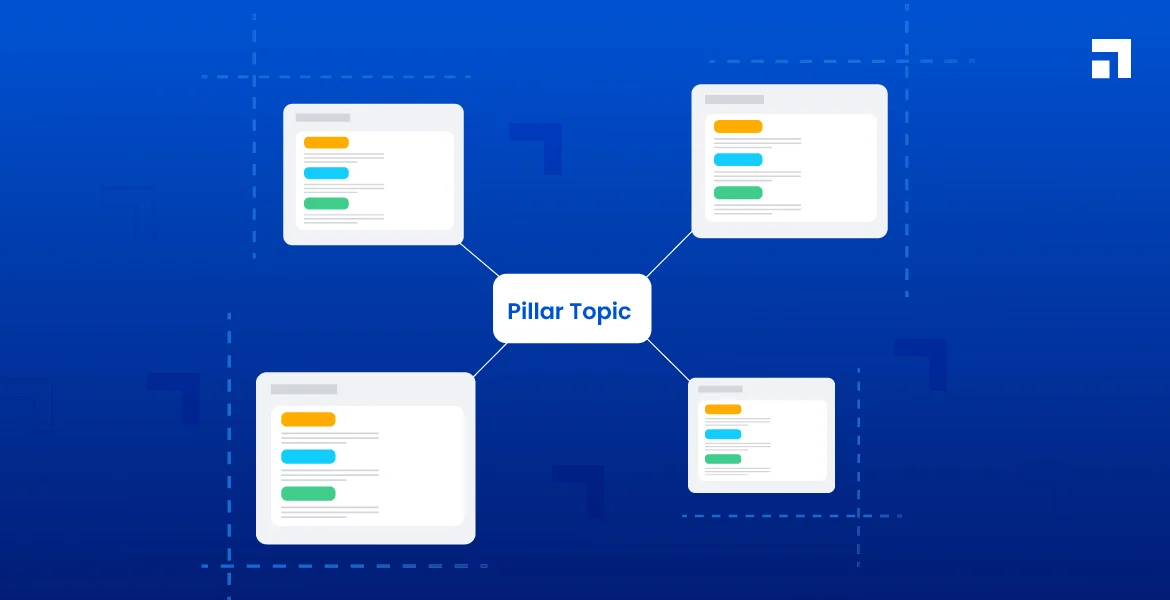
In the ever-evolving world of digital marketing, content remains king. But not just any content — strategically mapped content pillars that serve as the backbone of your brand’s online presence. Whether you’re a startup or an established enterprise, mapping your content pillars is essential for building authority, improving SEO, and creating a cohesive content strategy that resonates with your audience.
This guide will walk you through the process of identifying, planning, and implementing content pillars that drive long-term success. You’ll learn how to align your content with your audience’s needs, optimize for search engines, and create a structure that supports consistent, high-quality output.
What Is Mapping Your Content Pillars and Why It Matters
Mapping your content pillars means identifying the core themes or topics that will anchor your content strategy. These pillars are the foundation upon which all other content — from blog posts to social media updates — is built. They provide structure, focus, and consistency, ensuring that every piece of content serves a purpose and contributes to your broader goals.
Why does this matter? Because without clear content pillars, your content can become scattered, irrelevant, or ineffective. Search engines also rely on these pillars to understand the purpose and scope of your website, which directly impacts your visibility in search results.
A well-mapped content pillar strategy allows you to:
- Focus on topics that resonate with your audience
- Build topical authority and trust
- Improve SEO performance
- Create a scalable and sustainable content plan
As the reference material highlights, “Content pillars set the foundation for content planning and provide a center from which subtopics (cluster topics) can branch out.” This is where the real power lies: by establishing strong pillars, you create a framework that supports ongoing content creation and optimization.
How Content Pillars Impact SEO Performance
Content pillars play a critical role in SEO. They help search engines understand the structure and purpose of your website, making it easier for them to index and rank your content. Here’s how they influence key SEO metrics:
- Improved Visibility: By focusing on high-value topics, your content becomes more discoverable through search engines.
- Higher Engagement: Well-structured content that addresses user intent leads to longer dwell times and lower bounce rates.
- Better Authority Building: Consistently covering a topic in depth helps establish your brand as an expert in that area.
- Enhanced User Experience: A clear content hierarchy makes it easier for users to navigate your site and find what they need.
For example, if your content pillar is “Sustainable Living,” you can create cluster content around subtopics like “DIY Eco-Friendly Products” or “Green Packaging Solutions.” This not only improves your site’s internal linking structure but also signals to search engines that your site has comprehensive coverage of a specific topic.
According to the reference text, “Pillar content is a topic or key theme a brand covers comprehensively and regularly to establish authority and trust with an audience.” This is exactly what search engines look for when determining the relevance and quality of your site.
Step-by-Step Implementation Framework
Mapping your content pillars isn’t just about picking topics — it’s about strategically planning and executing a long-term content strategy. Follow this step-by-step framework to get started:
1. Define Your Audience and Goals
Before anything else, understand who your audience is and what they need. Conduct surveys, analyze social media interactions, and use tools like Google Analytics to gather insights into their behavior and preferences.
Ask yourself:
– What are their pain points?
– What questions do they frequently ask?
– What topics are they interested in?
Once you have a clear picture of your audience, define your business objectives. Are you aiming to increase traffic, generate leads, or build brand awareness? Your content pillars should align with these goals.
2. Identify Core Topics and Buckets
Based on your audience research and business goals, identify 3–5 core topics that represent your brand’s expertise and the interests of your audience. These will be your content pillars.
For each pillar, create “buckets” — subtopics or categories that support the main theme. For example, if your pillar is “Digital Marketing,” your buckets might include “SEO Strategies,” “Social Media Trends,” and “Content Creation.”
3. Audit Existing Content
Take stock of what you already have. Review your blog posts, social media content, and any other materials to see which pieces fit into your new content pillars. Identify content that can be updated, repurposed, or retired.
Use tools like Screaming Frog or Ahrefs to audit your site’s structure and content. Look for gaps and opportunities to enhance your existing content.
4. Conduct Keyword Research
Now that you have your pillars and buckets, it’s time to dig into keyword research. Use tools like SEMrush, Ahrefs, or Google Keyword Planner to identify high-value keywords that align with your content pillars.
Focus on both short-tail and long-tail keywords:
– Short-tail (e.g., “digital marketing”) are broad and competitive, ideal for your pillar pages.
– Long-tail (e.g., “how to improve SEO for small businesses”) are more specific and often have better conversion potential.
5. Analyze Competitors
Look at what your competitors are doing. Use tools like SimilarWeb or SpyFu to see what content they’re publishing and how it performs. Identify gaps in their content and opportunities to differentiate yourself.
If your competitors are missing out on certain subtopics, that’s a chance for you to fill the void and position yourself as a thought leader.
6. Create Outlines and Write Pillar Content
With your research and planning complete, it’s time to write your pillar content. Start with a detailed outline that includes:
– Headings and subheadings
– Key questions to answer
– Internal and external links
– Keywords to target
Use tools like SurferSEO or Clearscope to ensure your content is optimized for both users and search engines.
7. Publish and Promote
Once your pillar content is ready, publish it on your website. Then, promote it across your social media channels, email list, and other platforms. Encourage engagement by asking for comments, shares, and feedback.
8. Monitor and Update
Finally, track the performance of your content using analytics tools. Look at metrics like traffic, engagement, and conversions. Regularly review and update your content to keep it fresh and relevant.
Real or Hypothetical Case Study
Let’s say you run a fitness blog and decide to map your content pillars around the following themes: “Weight Loss,” “Strength Training,” and “Healthy Eating.”
You start by conducting keyword research and find that “how to lose weight fast” has high search volume and competition. You create a comprehensive pillar page on this topic, including subtopics like “Healthy Meal Prep,” “Exercise Routines,” and “Motivation Tips.”
Over time, your pillar page sees a 40% increase in organic traffic and a 25% boost in engagement. You also notice that users are spending more time on your site and returning for more content. This success leads you to expand your content pillars, adding new topics like “Mental Health” and “Sleep Hygiene.”
By consistently updating and expanding your content, you build a strong foundation for long-term growth and authority.
Tools and Techniques for Mapping Content Pillars
To streamline the process of mapping your content pillars, consider using the following tools:
- SurferSEO – For keyword clustering, semantic scoring, and on-page optimization.
- Ahrefs – For comprehensive keyword research and competitor analysis.
- SEMrush – For content gap analysis and backlink tracking.
- BrandWell – To generate SEO-friendly content briefs and outlines.
- Google Analytics – To monitor the performance of your content and track user behavior.
These tools can help you stay organized, make data-driven decisions, and ensure your content pillars are effective and impactful.
Future Trends and AI Implications
As AI continues to shape the future of content marketing, mapping your content pillars will become even more critical. With advancements in natural language processing and machine learning, search engines are getting better at understanding context and intent.
This means that content that is well-structured, focused, and aligned with user needs will perform better. AI-powered tools like Originality.ai’s Predictive SEO Tool can help you anticipate trends, optimize content, and stay ahead of the curve.
In the coming years, expect to see more emphasis on topic clusters, semantic relevance, and user-centric content. By mapping your content pillars now, you’ll be well-positioned to adapt to these changes and maintain a competitive edge.
Key Takeaways
- Content pillars are the foundation of a successful content strategy.
- They help you focus on topics that resonate with your audience and align with your business goals.
- Mapping your content pillars improves SEO, user experience, and content organization.
- Use tools like SurferSEO, Ahrefs, and BrandWell to streamline the process.
- Stay ahead of the curve by leveraging AI and anticipating future trends.
Whether you’re just starting out or looking to refine your current strategy, mapping your content pillars is a powerful way to build authority, drive traffic, and achieve long-term success.
Meta Title: The Ultimate Guide to Mapping Your Content Pillars for Long-Term Success
Meta Description: Learn how to map your content pillars for better SEO, audience engagement, and long-term growth. A step-by-step guide to building a strong content strategy.
SEO Tags (5): content pillars, content strategy, SEO, digital marketing, content planning
Internal Link Suggestions: [Parameter #1: Keyword Research], [Parameter #2: On-Page SEO], [Parameter #3: Content Auditing]
External Source Suggestions: [https://www.hubspot.com/], [https://www.semrush.com/], [https://www.surferseo.com/]








